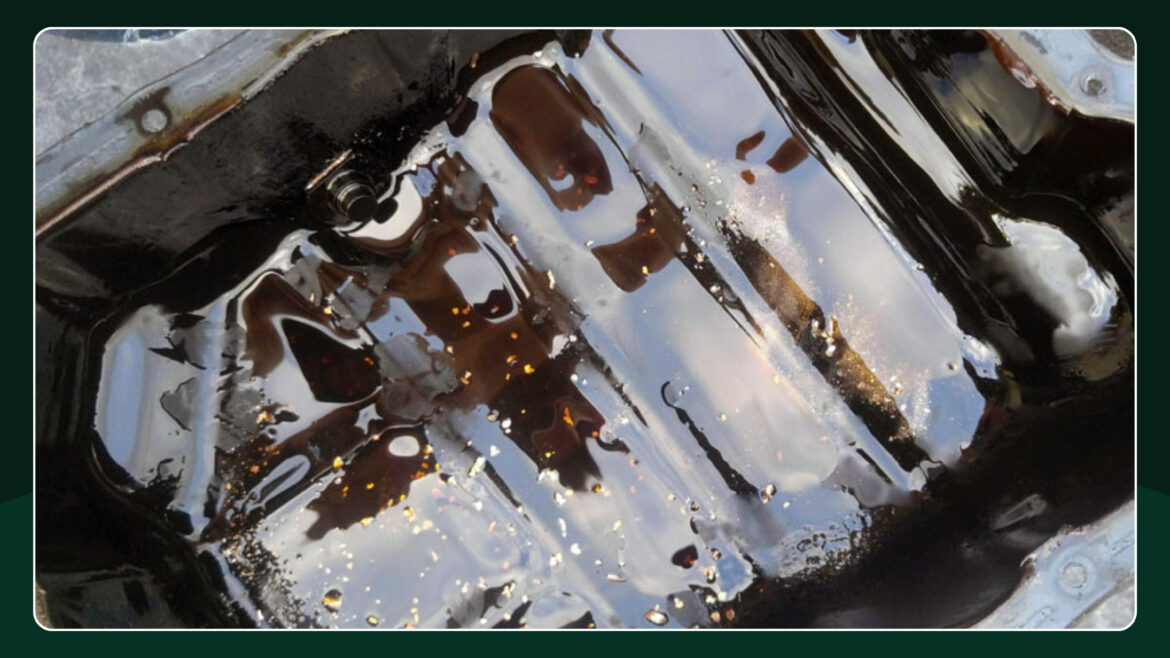
Here’s why you might find metal shavings in your oil
Nothing ruins a routine oil change more than metal shavings in the oil pan. The metal shavings are often very subtle, looking more like a sparkle than the larger debris you might immediately think of.
Is it normal for metal shavings to get into your oil? Some new engines exhibit a slight sparkle during or after the break-in period. This is completely normal and depends on both the engine manufacturer and the break-in process for your particular engine. If your engine is running normally, has already been broken in, and you are following the recommended maintenance intervals for your vehicle, you should never see metal shavings in your oil.
What does it mean if you have metal shavings in your oil?
Close-up of metal shavings on an oil filter
Metal in your oil is usually a sign of an unhealthy engine, something you never want to see. In some cases, it means you’ve been going too long between oil changes. In this case, your motor oil will no longer be able to properly protect your engine. Using the wrong amount of oil or even running out of oil in your engine at some point can also be the cause of excess metal particles in the oil.
How serious is this problem? Under certain circumstances, it is common to find metal shavings in your oil. This doesn’t necessarily mean you should look for a new engine, but it’s definitely something to pay attention to.
Look closely at your used oil and see if it develops more or less metal shavings over time. If you notice ticking or knocking noises in addition to further wear, set some money aside. An engine overhaul may be due soon.
Does the oil filter trap metal particles? Clogged oil filter
Oil filters are particularly good at trapping microscopic metal shavings and particles that are too small to see with the naked eye.
The oil filter’s ability to trap contaminants decreases over time. Change your oil filter regularly, following the manufacturer’s recommended intervals. If you notice metal shavings in your oil, we strongly recommend that you maintain at least the service intervals specified for your severe driving conditions. This typically requires an oil change every 3,000 miles, even if you are using full synthetic oil.
What should I do if I find oil shavings in my engine oil?
If you find metal shavings in your oil, all is not lost. Here are some ideas to help you decide your next steps.
1) Compression or Leak Test
Both compression and leak tests are good tests to assess the overall condition of your engine. An engine needs to generate compression to make power, and a compression test measures how much compression each cylinder generates.
A leak test helps identify where compression is being lost, and is especially useful when you have lost compression in a cylinder and need to figure out why. This test can be performed with relatively little effort using only a leak tester and an air compressor.
2) Used Oil Analysis
There are several companies that offer used oil analysis services. These include Blackstone Labs, NAPA, and Titan Laboratories. Used oil analysis can be used to determine the long-term condition of your engine. Sending a new oil sample after every oil change allows the oil analysis company to track engine wear. For example, increasing copper levels over time can indicate more wear than normal in connecting rod bearings.
If you send for used oil analysis, be sure to only collect oil that has come from a vehicle. Drip pans used on other vehicles are very dirty. It probably contains impurities that distort the analysis results.
Gear Oil Shine
Most transmission and differential drain plugs are magnetic and attract metals in the transmission fluid or gear oil. After 30,000 miles or more, it is common for the drain plug to have shiny metal particles on it, especially if you are changing the transmission fluid for the first time. Of course, this occurs as the gears in the transmission break in.
If you notice large chunks or debris in your transmission fluid, this is a cause for concern. Typically, this means that the gear teeth are wearing down excessively, which can cause problems with shifting and power transmission in the future.
Conclusion
Take a photo of the oil. If metal particles are OK, take a video while lightly panning the oil to get a good view of the metal. Finally, consider sending some of this oil for a used oil analysis.

